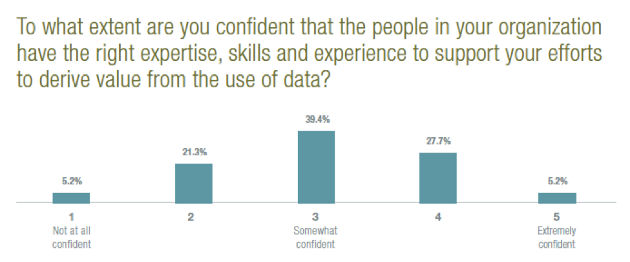I'm often asked whether companies should allocate precious resources toward professional development and training for their marketing teams. My answer is always "Yes, but..."
Although learning always adds value, companies must carry out the proper internal assessments before making any decisions regarding training—to ensure they allocate resources effectively.
But just how can companies do so? What are the steps required to ensure training effectiveness?
I'm going to share a four-step process to align your business objectives with your training objectives—and ensure you maximize training dollars in support of the No. 1 resource your company has to offer: its talent.
CEOs recognize the importance of talent
Talent is repeatedly reported as the top challenge to marketing team success today. PWC puts out an annual CEO survey in which talent and development are often key factors. In recent years, most CEOs have cited talent gaps as major concerns—and, most recently, in 2017, as many as 54% of CEOs said they plan to increase headcount in the next 12 months. That's an astonishing figure when you consider the surge in the incorporation of AI and machine-learning into regular workflows.
In short, talent—getting the right people to achieve your core objectives—remains a key driver for business growth.
Moreover, the Data & Marketing Association (DMA), together with the Interactive Advertising Bureau's Data Center of Excellence, recently published a study of the modern workplace and the shifts we can expect in the modern data-centric organization. The study found that just 5% of organizations are "extremely confident" that their internal teams have the right skills and experience to support their data-driven initiatives.

That lack of confidence in internal teams' abilities to meet the challenges of tomorrow, coupled with CEOs recognition of the need for equipped, well-trained, forward-thinking human capital, shows just how important professional development and training are to the modern organization.
Follow these four steps to select the right training program
1. Identify skills gaps in your organization
Where are there knowledge gaps? What is the "next level" you would like to bring your team/superstars to?
In a recent article, Bernd Welz, chief knowledge officer for products and innovation at SAP, underscores the importance of identifying skills gaps within your company, considering it a lynchpin necessity for ensuring that companies' transformation and modernization efforts are not put in jeopardy.
Various tools in the marketplace can help you assess your team and the skills required for success in a given business area—or your company may already have the internal knowledge required to conduct the assessment. That process can be a significant undertaking; however, once you have identified your skills-gap areas, you can begin to craft a plan of approach that will create much more value for your talent growth because it is also explicitly aligned with your core business objectives.
2. Do your homework
You have a multitude of learning and development options. How do you narrow the field?
You want to ensure that you are enlisting reliable and cutting edge training that will equip your team with specific, applicable knowledge. The key is to look to experts in marketing and those with proven track records for industry knowledge and hands-on know-how.
Identify providers that have knowledge your company already trusts, and you are one step ahead of the game.
You also need to source what is feasible within your budget. It is important to note, however, that if you are looking for anything deeper than theoretical knowledge, you may need to pay more. Many good platforms offer good training for free, but beware: They often do not go as in-depth as your needs might require.
3. Decide who will be trained
Do you want to train individuals, or do you want to train groups?
Professional training is a useful tool to level-set entire teams—both for teamwork purposes (shared nomenclature, identifying a common business objective, etc.) and for goal alignment across entire departments. Conversely, if your goal is to shore up and equip certain superstars within your team, you may look toward a combination of one-off seminars, and online training, together with an internal mentoring program.
Defining your core training audience will also help to define what you will need to budget and how you will allocate that money.
4. Choose the best format for your team—video, mobile, micro, or 'old school'
Training opportunities are flooding the marketplace, and they are being made available in more formats than ever. From classroom to online options, to video and, yes, even mobile apps, it's all out there and available right now.
Based on a 2017 survey of learning and development professionals, LinkedIn reported that 7 out of 10 organizations are starting to incorporate video-based training, and upwards of 67% of people are now learning on their mobile devices! These trends are becoming commonplace, and often they constitute a more effective strategy for retention.
The ability to train in small, concentrated chunks through video or mobile apps can be appealing to busy executives (and employees) who have only a tiny portion of their busy workweek available to devote to training and development.
It may be worth investigating whether video and mobile are a good fit for your company. Which format you choose will depend largely on available budget and your company culture.
* * *
To figure out the best training solution for your company...
- Know your talent, their needs and strategic business objectives.
- Identify leaders in the industry whose knowledge and skillsets you can trust.
- Focus on the methods that will best equip your team for lasting knowledge.
- Allocate your budget accordingly.




